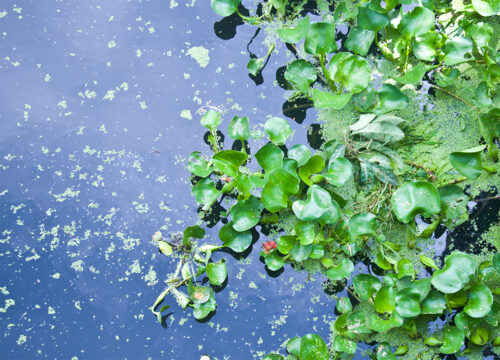
- Author Fitzroy Basin Association
- Publish date 21 March 2024
- Type Video
- Documents
- Water: Making Water Work program
- Water
Summary
Watch the video on YouTube
Making Water Work program – hyacinth harvest and processing
A pilot project is underway in the Fitzroy River waterways (Rockhampton, Central Queensland) to explore whether hyacinth, an invasive and fast spreading weed, could be turned into mulch or compost for agricultural use.
The project is apart of the Cooperative Research Centre for Developing Northern Australia (CRCNA) Making Water Work program.
Around 500 tonnes of the weed will be removed from Murray Lagoon near Rockhampton and turned into mulch or compost.
It will be tested for its effectiveness at improving soil nutrition and microbe activity at three properties in the region, including a cropping, fruit and grazing operation.
The hyacinth will be converted into mulch and compost for the first trial, and potentially biochar and stockfeed in the future. The project is being managed by the Fitzroy Basin Association.

Projects
Making Water Work : Integrating nutrient, waste and energy streams in agriculture development through hyacinth harvest and processing
Water hyacinth is an invasive aquatic weed introduced into the Fitzroy River in Central Queensland as an ornamental plant. However, once hyacinth enters waterways its long-term impact is significant due to the rate of growth, density of biomass and seed life. This project will seek to identify and evaluate methods for the beneficial reuse of water hyacinth in the Fitzroy River, including as a vector for the removal of nutrients from the waterway to improve water quality flowing to the Great Barrier Reef.


